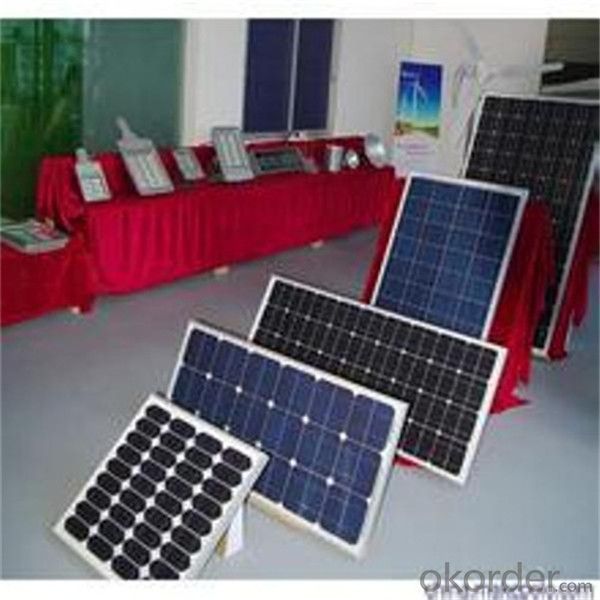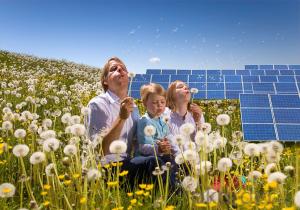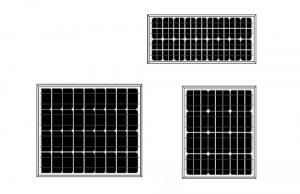Bisol Solar Panels 300w Poly Solar PV Modules for Large from CNBM
- Loading Port:
- Shanghai
- Payment Terms:
- TT OR LC
- Min Order Qty:
- 1000 watt
- Supply Capability:
- 100000 watt/month
OKorder Service Pledge
OKorder Financial Service
You Might Also Like
Specification
Basic Info.
Model NO.: | GP-300P-72 | Material: | Polycrystalline Silicon |
Attribute (E. G.: Size): | Value (E. G.: 12 Inches) | Power: | 300W |
Export Markets: | Global | Trademark: | Gi-Power |
Packing: | Standard Export Packaging | Standard: | TUV; CE; ISO |
Origin: | Guangdong, China | HS Code: | 8541402000 |
Production Capacity: | 70mw/Year |
Product Description
300W/36V solar panel/module for solar power plant.
Quality Ensurance:
1. Excellent A Grade solar cell from Motech or Hanwha solar.
2. Excellent backsheet from SFC, 3M;
3. EVA from Bridgestone / First;
4. Junction box with UL and TUV listed - GZX, IP65;
5. High transmission low iron tempered glass from Xinyi Glass - China Top 1;
6. Solar panels with TUV, CE, ISO9001 certified.
Strong, lightweight aluminum frame design with reinforced sealing and load hold to prevent freezing and warping, and stand against high wind.
Under Standard Test Conditions(STC): Irradiance of 1000W/m2, Am1.5 and 25º C cell temperature
Operating Temperature: -40 ~ +85° C
Storage Temperature: -40 ~ +85° C
Mechanical Characteristics:
Dimensions: 1956mm(L) x 992mm(W) x 50mm(H)
Weight: 24KG
Polycrystalline 156*156 solar cells: 72 cells
Module Warranty:
Warranty on material and workmanship: Five years
Guaranteed output of 90% after 10 years and 80% after 25 years.
| Performance | ||
| Rated Power[Pmax] | 300W | |
| Power Tolerance | ± 3% | |
| Nominal Voltage | 36V | |
| Design Life | 25 years | |
| Electrical Characteristics | ||
| Maximum Power [Pmax] | 280W± 3% | |
| Maximum Power Voltage [Vmp] | 36.43V± 3% | |
| Maximum Power Current [Imp] | 7.65A± 3% | |
| Short-Circuit Current [Isc] | 8.23A± 3% | |
| Open-Circuit Voltage [Voc] | 43.92V± 3% | |
| Current Temperature Coefficient | 0.08%/º C | |
| Voltage Temperature Coefficient | - 0.32%/º C | |
| Power Temperature Coefficient | -0.38%/º C | |
| Maximum System Voltage | 1000V | |
Company Profile


Business Type: Manufacturer
Main Products: Solar Panel , Solar Module , PV Panel , PV Module , Poly Crystalline Solar Panel , Poly Crystalline Solar Module
Number of Employees: 202
Year of Establishment: 2009-03-26
Management System Certification: ISO 9001
OEM/ODM Availability: Yes
- Q: Can solar panels be used in remote areas?
- Yes, solar panels can be used in remote areas. They are a popular and viable solution for generating electricity in locations that are not connected to the traditional power grid. Solar panels can be set up in remote areas to harness energy from the sun and provide electricity for various purposes, such as lighting, powering small appliances, or even charging batteries. Their ability to operate independently without the need for extensive infrastructure makes them an ideal choice for remote areas where access to electricity is limited or non-existent.
- Q: Can solar panels be used for powering outdoor signage?
- Yes, solar panels can be used for powering outdoor signage. Solar panels convert sunlight into electricity, making them an eco-friendly and cost-effective solution for outdoor signage that is not connected to the grid.
- Q: Can solar panels be installed on factories or industrial buildings?
- Yes, solar panels can definitely be installed on factories or industrial buildings. In fact, these large structures often have expansive rooftops that can accommodate a considerable number of solar panels. Installing solar panels on factories or industrial buildings not only helps reduce their reliance on traditional energy sources, but also provides an opportunity for these establishments to generate their own sustainable and clean electricity.
- Q: If a solar panel (using 36 3x6 solar cells) puts out 60 watts, how many panels would I need (for a house) if I use a max of 2300 kWh in a month? I checked my electric usage for the past 2 years and the kWh is usually lower but I wanted to use the most kWh used (2300) for my question. Thanks!
- Build okorder /
- Q: Can solar panels be installed on billboards?
- Yes, solar panels can be installed on billboards. In fact, it is becoming increasingly common to see billboards equipped with solar panels to harness solar energy and power their lighting systems. This not only reduces the environmental impact of billboard advertising but also helps in promoting renewable energy usage.
- Q: Can solar panels be installed in areas with high winds?
- Yes, solar panels can be installed in areas with high winds. However, it is important to ensure that the panels are securely mounted and properly designed to withstand the wind load. Additionally, the orientation and tilt of the panels can be adjusted to minimize wind resistance and improve their durability in windy conditions.
- Q: Are solar panels weatherproof?
- Yes, solar panels are designed to be weatherproof and can withstand various weather conditions such as rain, snow, hail, and wind. They are made with durable materials and have protective coatings to ensure long-term performance even in harsh climates.
- Q: Is it possible for a 2V rated panel to charge a bank of batteries equal to around 36V? I believe that the panels should equal or exceed the voltage of the batteries but, I'm not for certain.
- you'll have to use 3 panels connected in series or use a dc to dc up converter, the former is a better option
- Q: How long does it take a 5 watt, 2 volt solar panel to charge a 2 volt R.V. battery?
- It is related to the size and capacity of your battery.
- Q: I got an 8v solar panel for a project today, the only problem is that it came without any wires attached to it. Now i don't know what type of wires i should use and if i should solder them on or if i should use epoxy instead. Can anybody help me out?
- 6 gauge wire would be a good size. Just solder it on and run it wherever you want.
Send your message to us
Bisol Solar Panels 300w Poly Solar PV Modules for Large from CNBM
- Loading Port:
- Shanghai
- Payment Terms:
- TT OR LC
- Min Order Qty:
- 1000 watt
- Supply Capability:
- 100000 watt/month
OKorder Service Pledge
OKorder Financial Service
Similar products
Hot products
Hot Searches
Related keywords




























